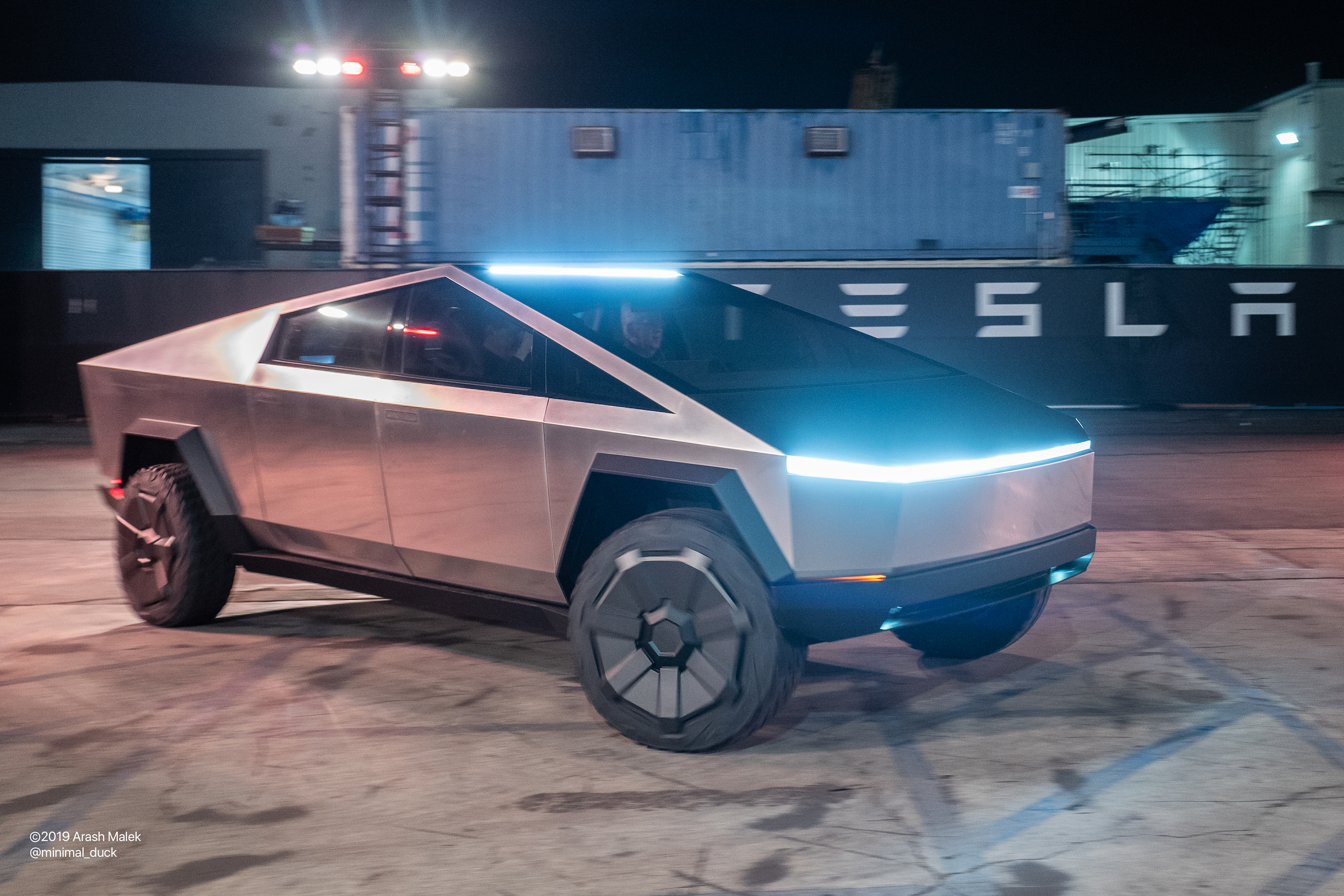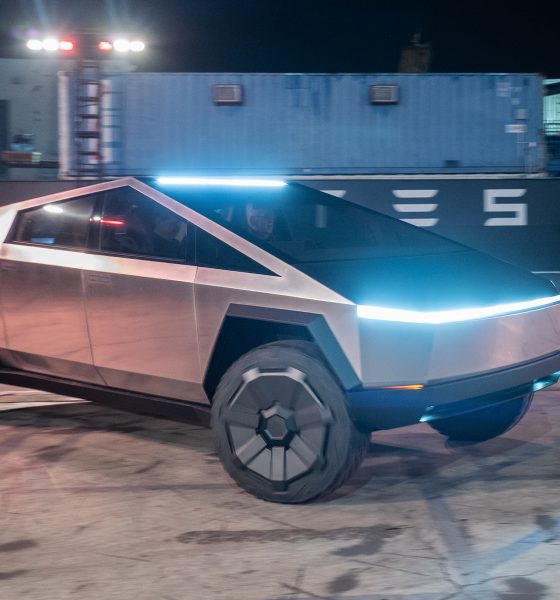

News
Tesla’s Elon Musk shuts the door on Gigafactory Texas talk, but for how long?
George Strait once said that all of his exes live in Texas, and maybe Elon Musk doesn’t want his new electric vehicle facility to be infiltrated by the country music legend’s past lovers.
Just kidding.
While we all patiently wait for Tesla’s CEO to announce the location of its next vehicle production plant, I was pretty sure that Texas had been confirmed as the spot. After seeing some reports, I dug a little deeper and found that the State of Texas had some records, including purchase price agreements, on a plot of land just outside of Austin.
However, when I reported the news, Elon responded and told us at Teslarati that the company had the option to buy the land, but they had not secured a purchase agreement and exercised its right to purchase the property.
I have to admit, I was pretty shocked. I have been following the situation closely for months, and it is pretty evident that Texas certainly has the most advantages. Not to mention, Elon definitely seems to be leaning toward it. He’s been talking about Texas since January, and we’ve already talked about the distinct advantages the state holds over any other location.
However, Musk wasn’t done there. He then added that Tesla was looking at several locations. I’m assuming Tulsa, Oklahoma, is also in the mix considering that has been a location that is very open to taking its oil roots and trading them in for a new electrified infrastructure that will create a string of sustainable transportation production lines in the state.
However, it is really evident that Tesla might be having some second thoughts on the Lone Star State…or are they?
First, let’s consider the details of the land plot in question in Texas. It’s 2,100 acres, its $5.2 million bucks, and its really perfect for what Tesla has wanted. We know that the new factory is set to be the biggest one yet because both Zachary Kirkhorn and Elon said they are going to start calling the factories “Tera” instead of “Giga.”
To put the size of the land into perspective, Fremont sits on 370 acres, Giga Shanghai on 210 acres, and Giga Berlin on 740 acres. This means the prospective Texas land plot is nearly three times as big as Giga Berlin, which is the factory that will produce Tesla cars for all of Europe, and it is all going to be used to create the Cybertruck and the Model Y.
We know the demand for the Cybertruck is enormous. The pre-order number is not officially public knowledge. Still, there is some indication that Tesla is getting near three-quarters of a million reservations for the truck and its tough, robust exterior.
This is a preview from our weekly newsletter. Each week I go ‘Beyond the News’ and handcraft a special edition that includes my thoughts on the biggest stories, why it matters, and how it could impact the future.
A big thanks to our long-time supporters and new subscribers! Thank you.
We know that Tesla wants to build the plant in the middle of the country. That could mean anything, from North Dakota to Texas literally, and it could go slightly West to Colorado, and slightly East to Missouri. That’s what is confusing.
Now that there are apparently “several locations” in the mix, the real question is: Why is the Texas deal taking so long? Is Tesla looking to negotiate an even lower price? I decided to dig a little more.
According to Texas A&M University’s “Texas Rural Land Prices” page, where the college has the price of land from Q4 1971 up until Q1 2020, the most recent cost of an acre of property in the state is $2,986. The prospective plot of land where Tesla could build its next factory is 2,100 acres. So the value of the property, according to these statistics, is $6,270,600. According to the application that Tesla and the State of Texas have, the land price that was agreed upon is $5,298,275, giving the company a nearly $1 million discount. It is about a 16% discount according to my handy, dandy calculator.
Texas has also announced its intentions to give the automaker a sweet incentive package to the tune of $68 million, according to reports. That’s a lot of scratch, and it could certainly help with the purchase price, the labor costs of constructing the building, and more.
It is just tough to say why the deal is taking a while. The Cybertruck’s Dual and Tri-Motor variants are going to be produced at the tail-end of 2021, and with Tesla’s track record with the Model Y in the US and the Model 3 in China, they’ll be built well before then. That would give Tesla, if the company started construction in July, 18 months to complete the Cybertruck portion of the factory. Fremont could handle Model Y production until the new factory’s Phase 2 is completed.
I am personally excited to see where the factory ends up, and I really, genuinely think that Texas is where the factory will end up.
Where do you think the factory will be when its all said and done? And why do you think Tesla is kind of dragging its feet through the purchase process?

News
Nvidia CEO Jensen Huang explains difference between Tesla FSD and Alpamayo
“Tesla’s FSD stack is completely world-class,” the Nvidia CEO said.

NVIDIA CEO Jensen Huang has offered high praise for Tesla’s Full Self-Driving (FSD) system during a Q&A at CES 2026, calling it “world-class” and “state-of-the-art” in design, training, and performance.
More importantly, he also shared some insights about the key differences between FSD and Nvidia’s recently announced Alpamayo system.
Jensen Huang’s praise for Tesla FSD
Nvidia made headlines at CES following its announcement of Alpamayo, which uses artificial intelligence to accelerate the development of autonomous driving solutions. Due to its focus on AI, many started speculating that Alpamayo would be a direct rival to FSD. This was somewhat addressed by Elon Musk, who predicted that “they will find that it’s easy to get to 99% and then super hard to solve the long tail of the distribution.”
During his Q&A, Nvidia CEO Jensen Huang was asked about the difference between FSD and Alpamayo. His response was extensive:
“Tesla’s FSD stack is completely world-class. They’ve been working on it for quite some time. It’s world-class not only in the number of miles it’s accumulated, but in the way it’s designed, the way they do training, data collection, curation, synthetic data generation, and all of their simulation technologies.
“Of course, the latest generation is end-to-end Full Self-Driving—meaning it’s one large model trained end to end. And so… Elon’s AD system is, in every way, 100% state-of-the-art. I’m really quite impressed by the technology. I have it, and I drive it in our house, and it works incredibly well,” the Nvidia CEO said.
Nvidia’s platform approach vs Tesla’s integration
Huang also stated that Nvidia’s Alpamayo system was built around a fundamentally different philosophy from Tesla’s. Rather than developing self-driving cars itself, Nvidia supplies the full autonomous technology stack for other companies to use.
“Nvidia doesn’t build self-driving cars. We build the full stack so others can,” Huang said, explaining that Nvidia provides separate systems for training, simulation, and in-vehicle computing, all supported by shared software.
He added that customers can adopt as much or as little of the platform as they need, noting that Nvidia works across the industry, including with Tesla on training systems and companies like Waymo, XPeng, and Nuro on vehicle computing.
“So our system is really quite pervasive because we’re a technology platform provider. That’s the primary difference. There’s no question in our mind that, of the billion cars on the road today, in another 10 years’ time, hundreds of millions of them will have great autonomous capability. This is likely one of the largest, fastest-growing technology industries over the next decade.”
He also emphasized Nvidia’s open approach, saying the company open-sources its models and helps partners train their own systems. “We’re not a self-driving car company. We’re enabling the autonomous industry,” Huang said.
Elon Musk
Elon Musk confirms xAI’s purchase of five 380 MW natural gas turbines
The deal, which was confirmed by Musk on X, highlights xAI’s effort to aggressively scale its operations.

xAI, Elon Musk’s artificial intelligence startup, has purchased five additional 380 MW natural gas turbines from South Korea’s Doosan Enerbility to power its growing supercomputer clusters.
The deal, which was confirmed by Musk on X, highlights xAI’s effort to aggressively scale its operations.
xAI’s turbine deal details
News of xAI’s new turbines was shared on social media platform X, with user @SemiAnalysis_ stating that the turbines were produced by South Korea’s Doosan Enerbility. As noted in an Asian Business Daily report, Doosan Enerbility announced last October that it signed a contract to supply two 380 MW gas turbines for a major U.S. tech company. Doosan later noted in December that it secured an order for three more 380 MW gas turbines.
As per the X user, the gas turbines would power an additional 600,000+ GB200 NVL72 equivalent size cluster. This should make xAI’s facilities among the largest in the world. In a reply, Elon Musk confirmed that xAI did purchase the turbines. “True,” Musk wrote in a post on X.
xAI’s ambitions
Recent reports have indicated that xAI closed an upsized $20 billion Series E funding round, exceeding the initial $15 billion target to fuel rapid infrastructure scaling and AI product development. The funding, as per the AI startup, “will accelerate our world-leading infrastructure buildout, enable the rapid development and deployment of transformative AI products.”
The company also teased the rollout of its upcoming frontier AI model. “Looking ahead, Grok 5 is currently in training, and we are focused on launching innovative new consumer and enterprise products that harness the power of Grok, Colossus, and 𝕏 to transform how we live, work, and play,” xAI wrote in a post on its website.
Elon Musk
Elon Musk’s xAI closes upsized $20B Series E funding round
xAI announced the investment round in a post on its official website.

xAI has closed an upsized $20 billion Series E funding round, exceeding the initial $15 billion target to fuel rapid infrastructure scaling and AI product development.
xAI announced the investment round in a post on its official website.
A $20 billion Series E round
As noted by the artificial intelligence startup in its post, the Series E funding round attracted a diverse group of investors, including Valor Equity Partners, Stepstone Group, Fidelity Management & Research Company, Qatar Investment Authority, MGX, and Baron Capital Group, among others.
Strategic partners NVIDIA and Cisco Investments also continued support for building the world’s largest GPU clusters.
As xAI stated, “This financing will accelerate our world-leading infrastructure buildout, enable the rapid development and deployment of transformative AI products reaching billions of users, and fuel groundbreaking research advancing xAI’s core mission: Understanding the Universe.”
xAI’s core mission
Th Series E funding builds on xAI’s previous rounds, powering Grok advancements and massive compute expansions like the Memphis supercluster. The upsized demand reflects growing recognition of xAI’s potential in frontier AI.
xAI also highlighted several of its breakthroughs in 2025, from the buildout of Colossus I and II, which ended with over 1 million H100 GPU equivalents, and the rollout of the Grok 4 Series, Grok Voice, and Grok Imagine, among others. The company also confirmed that work is already underway to train the flagship large language model’s next iteration, Grok 5.
“Looking ahead, Grok 5 is currently in training, and we are focused on launching innovative new consumer and enterprise products that harness the power of Grok, Colossus, and 𝕏 to transform how we live, work, and play,” xAI wrote.








